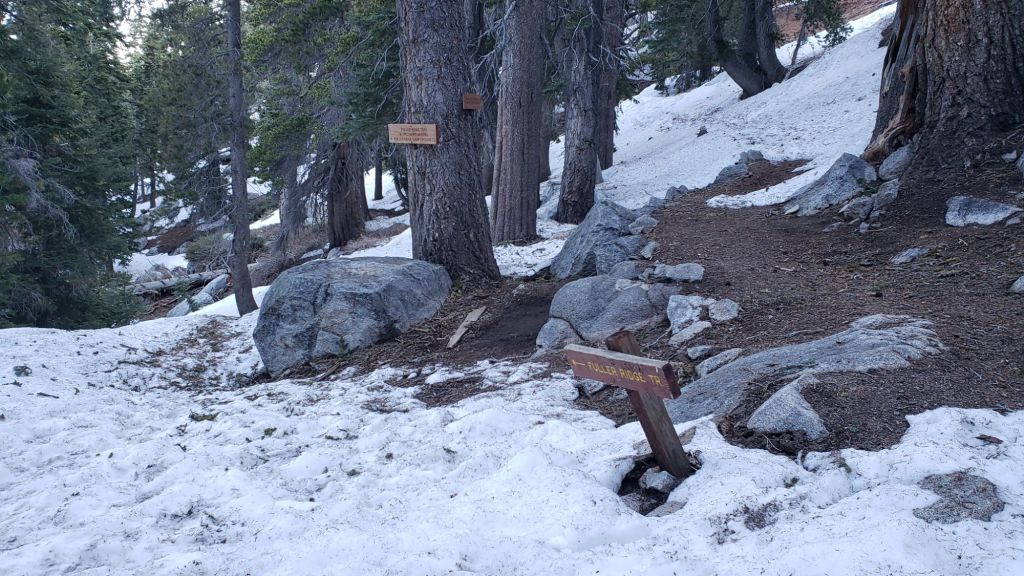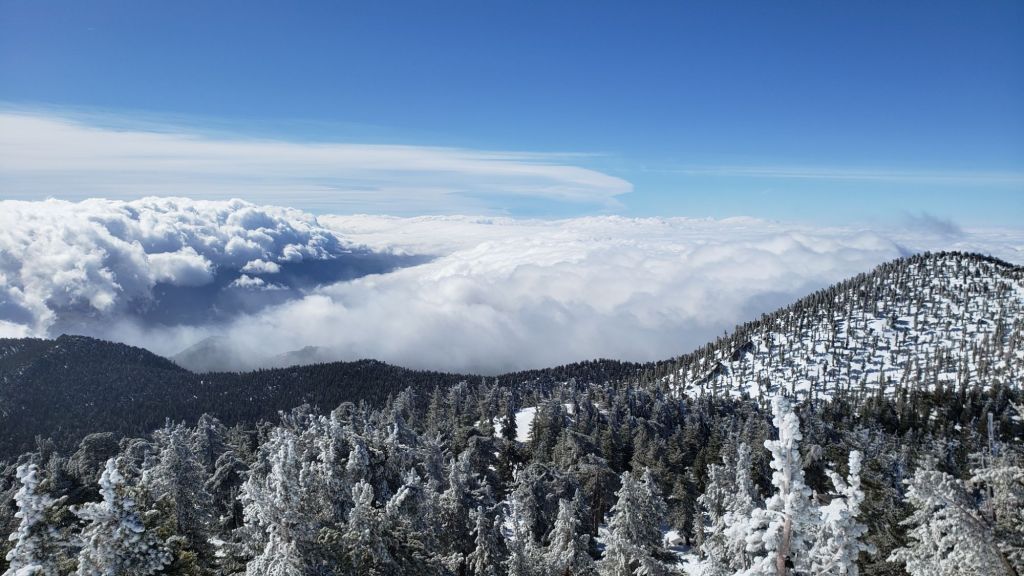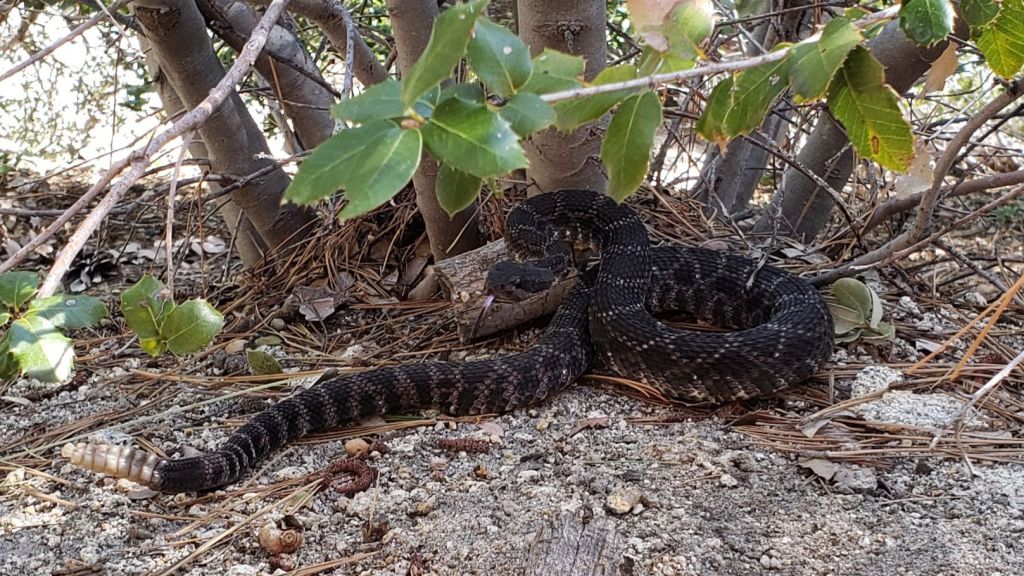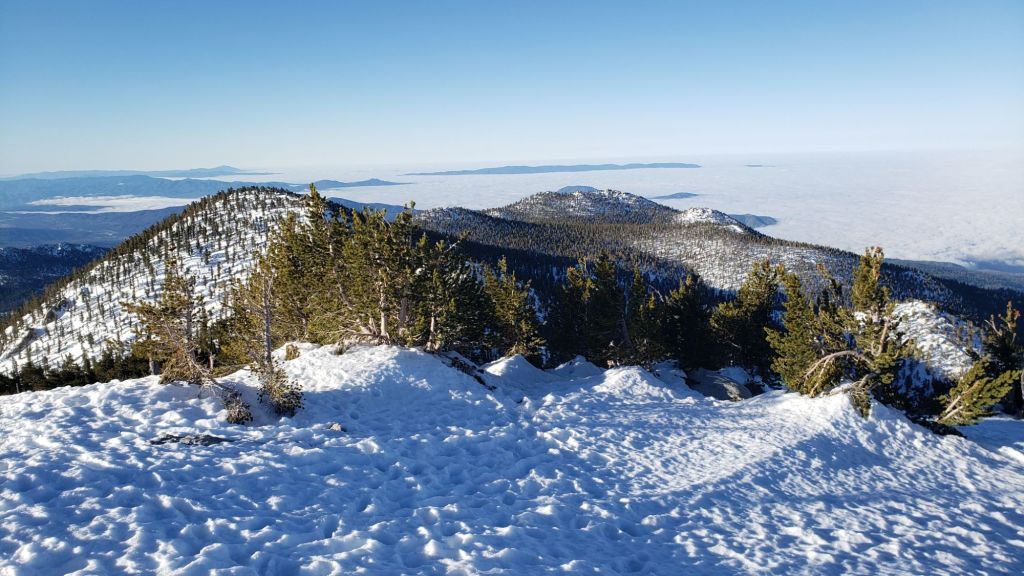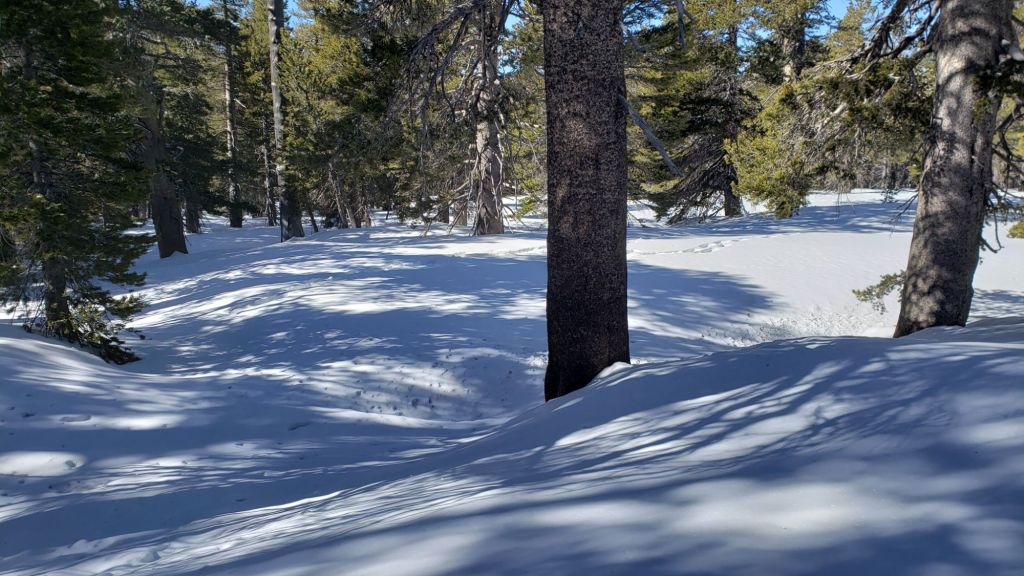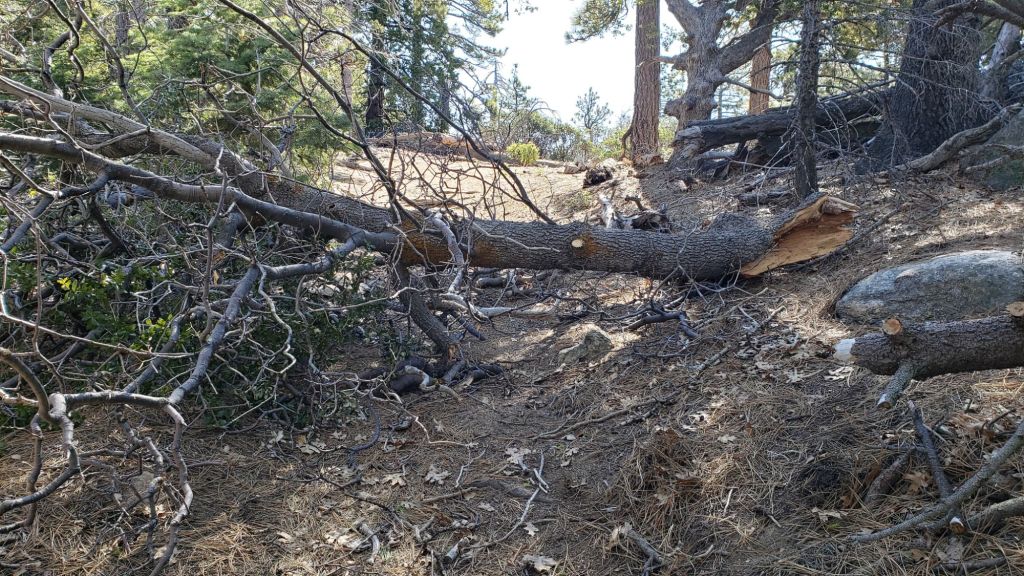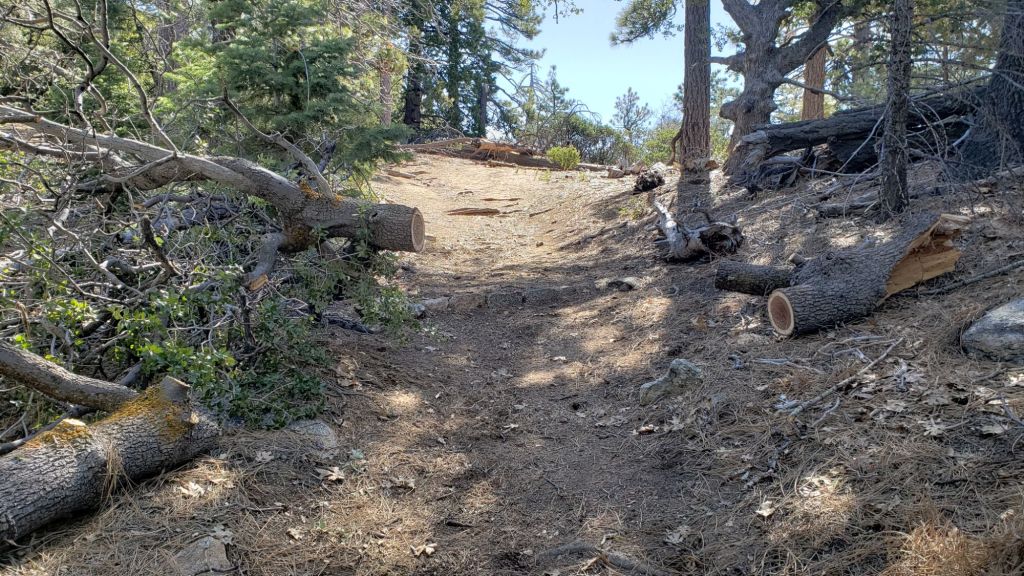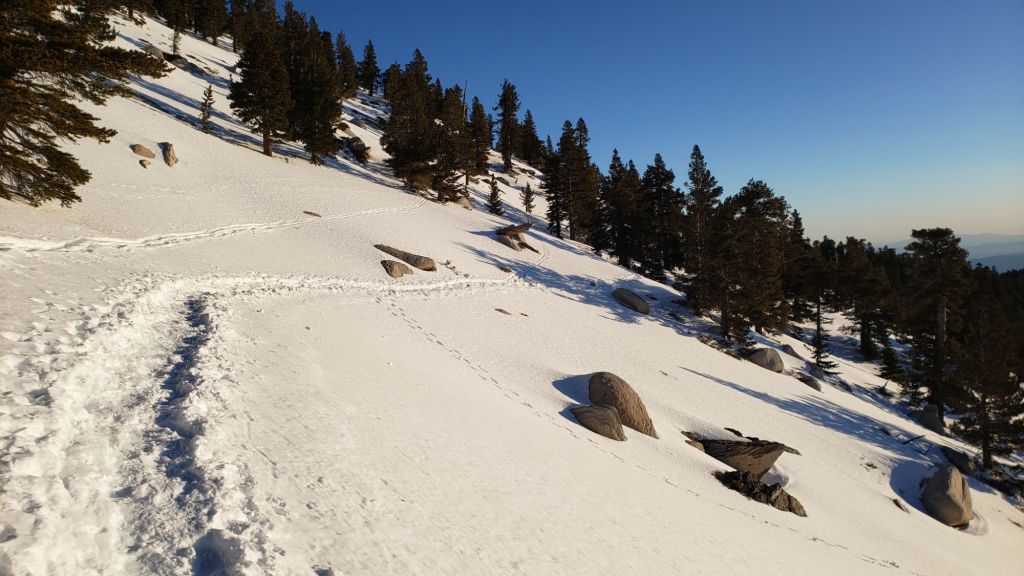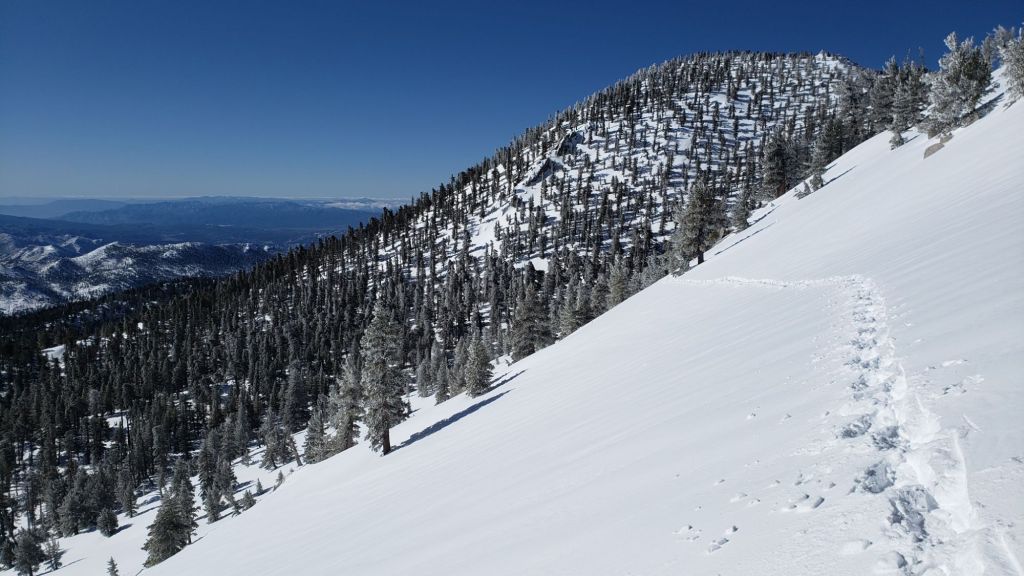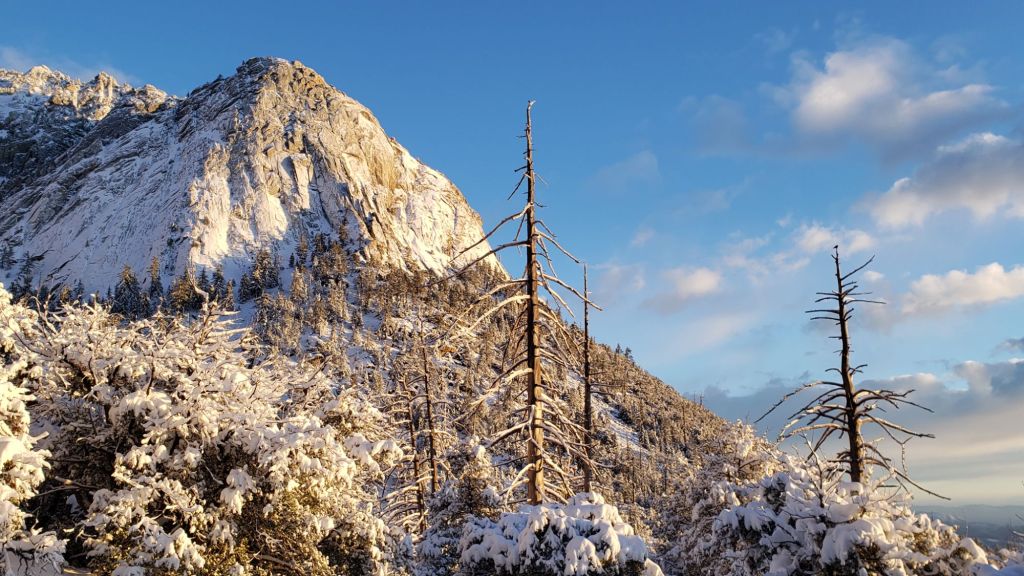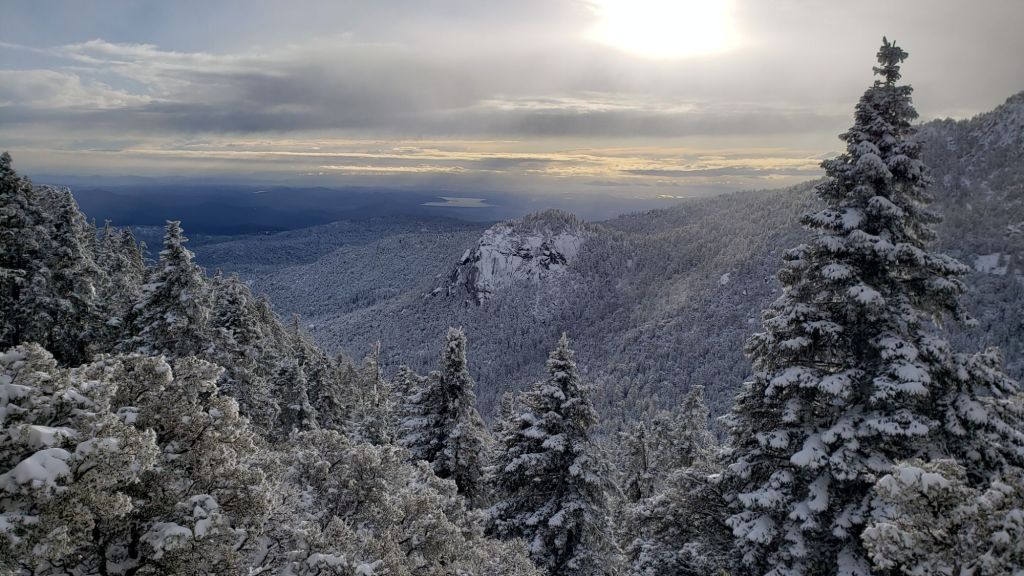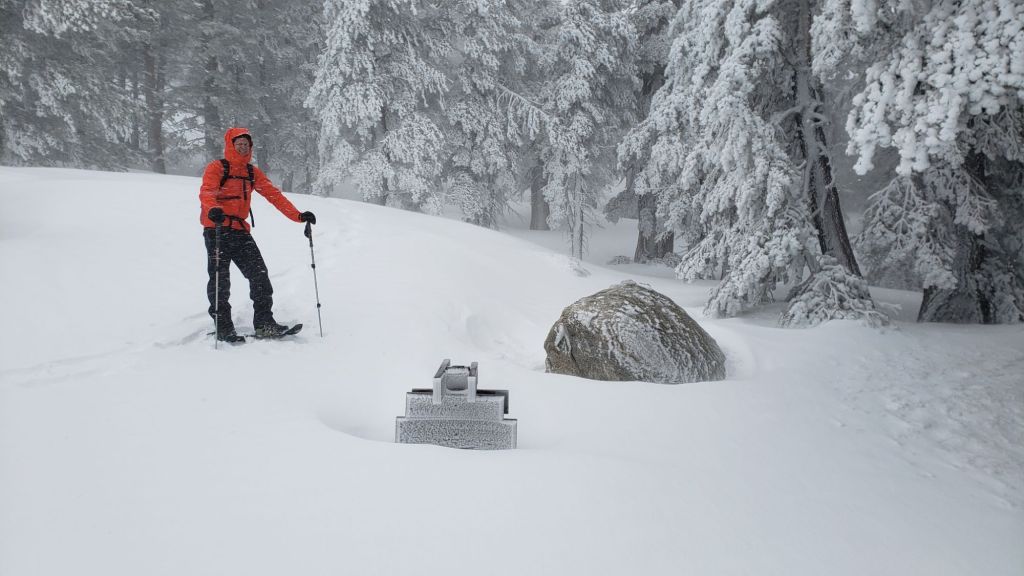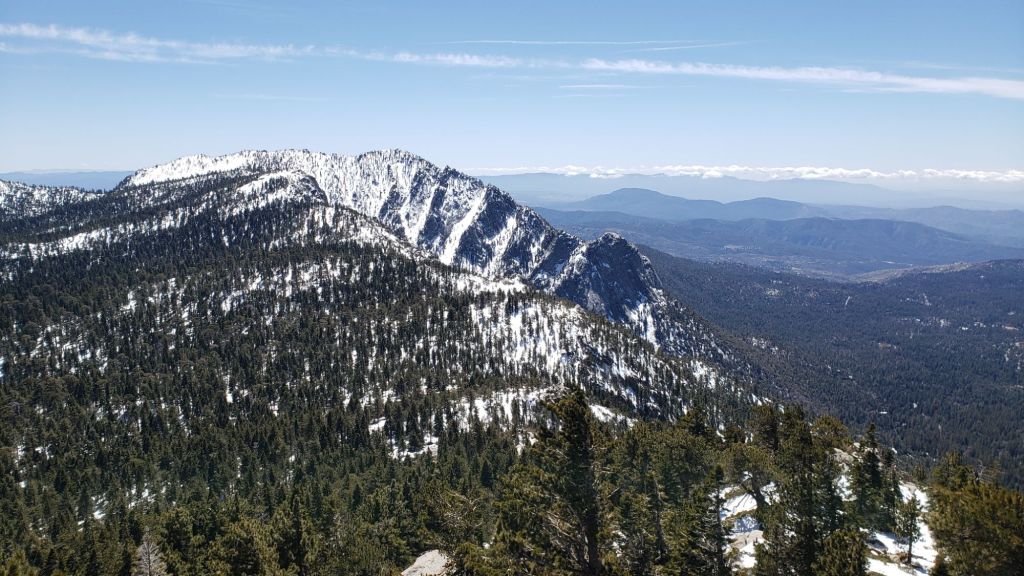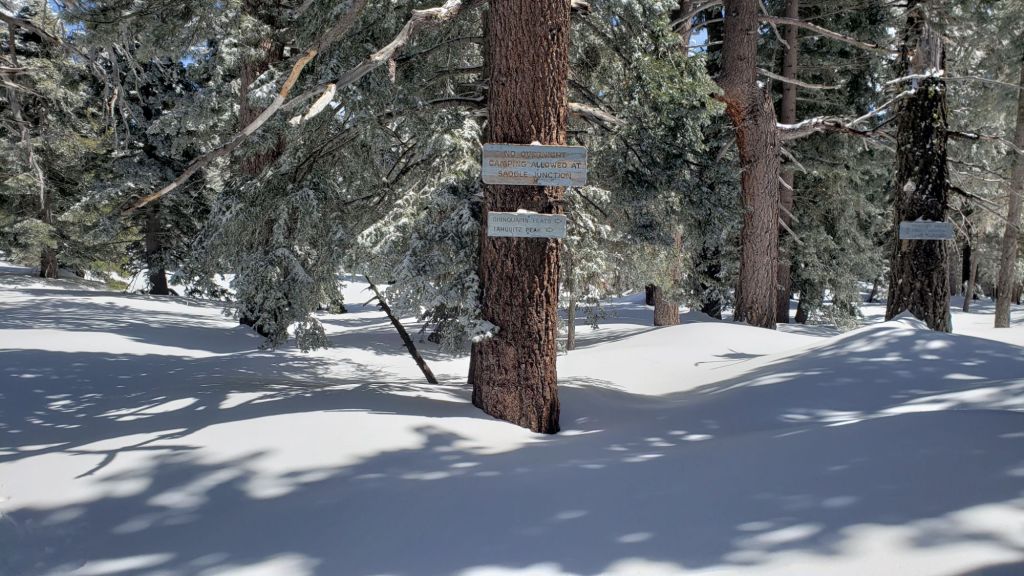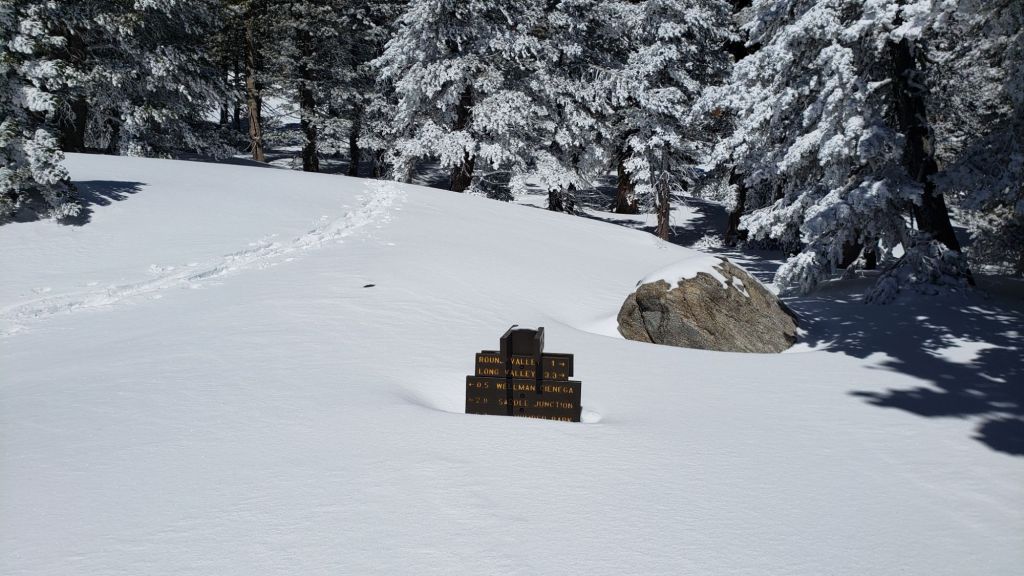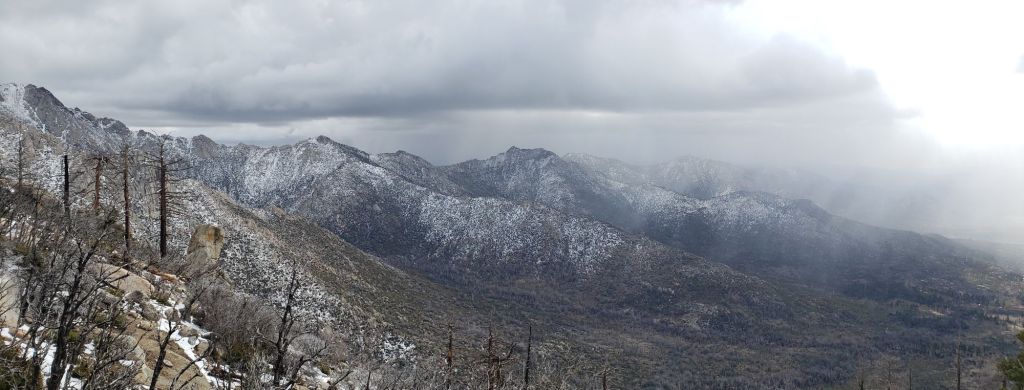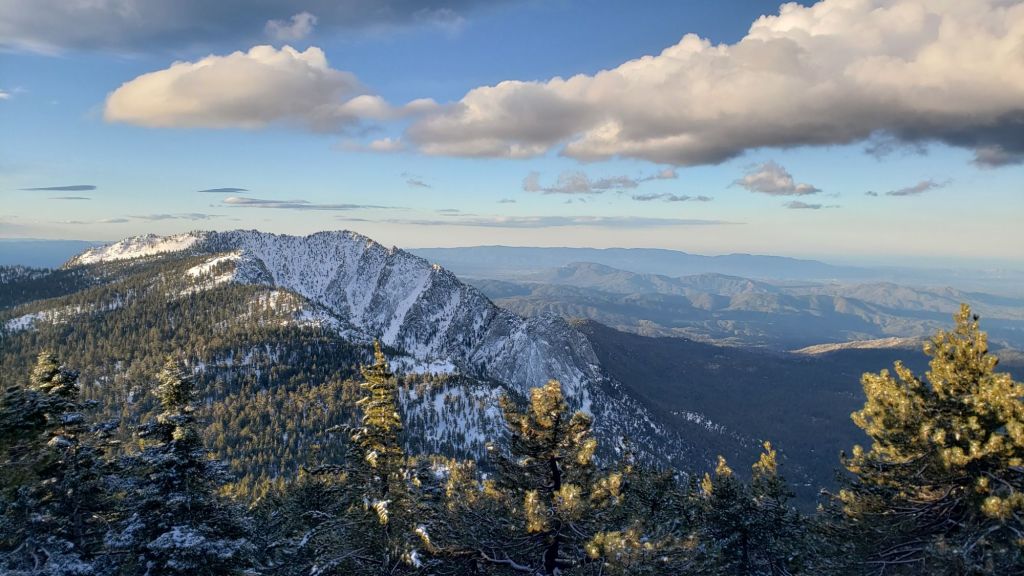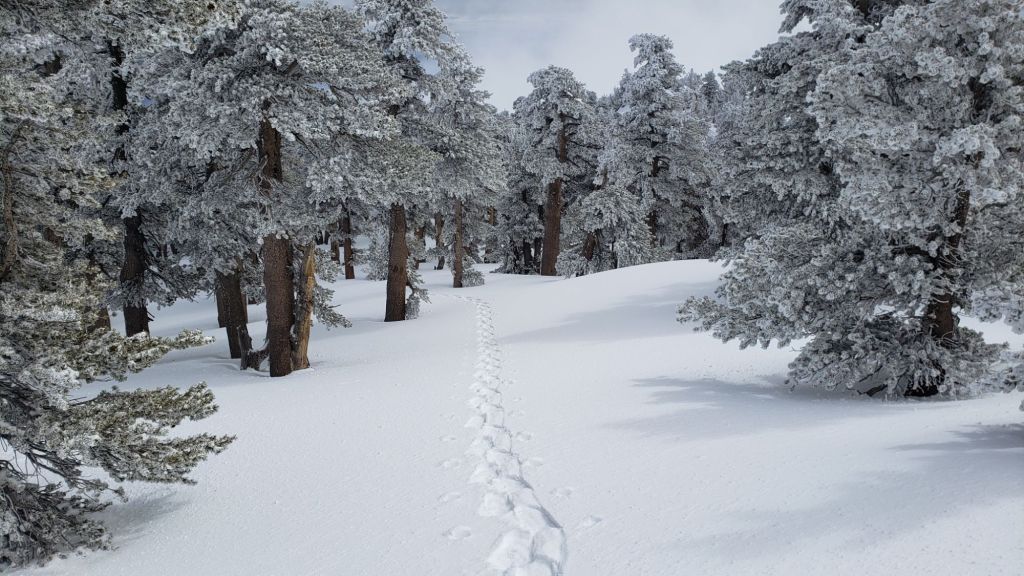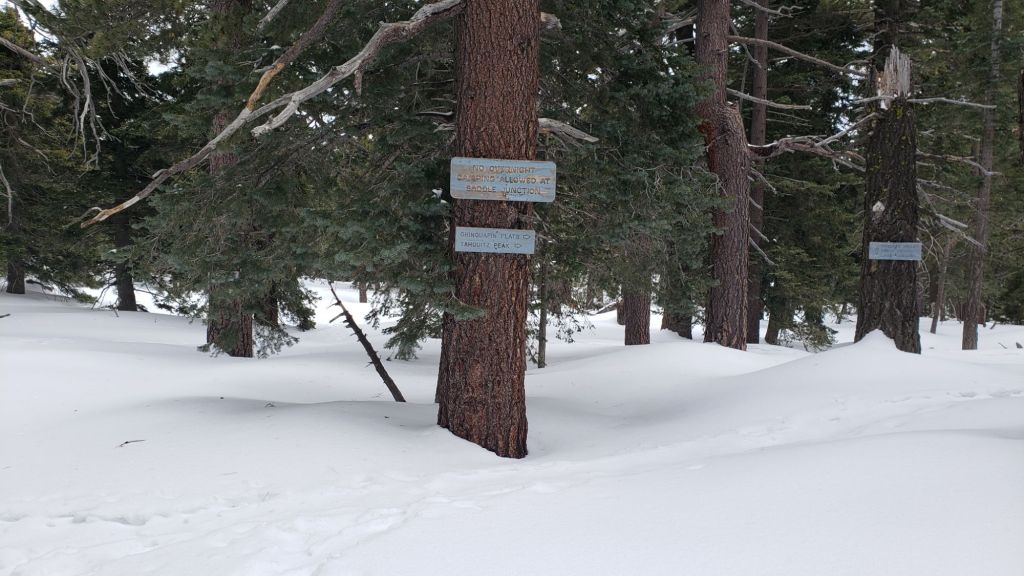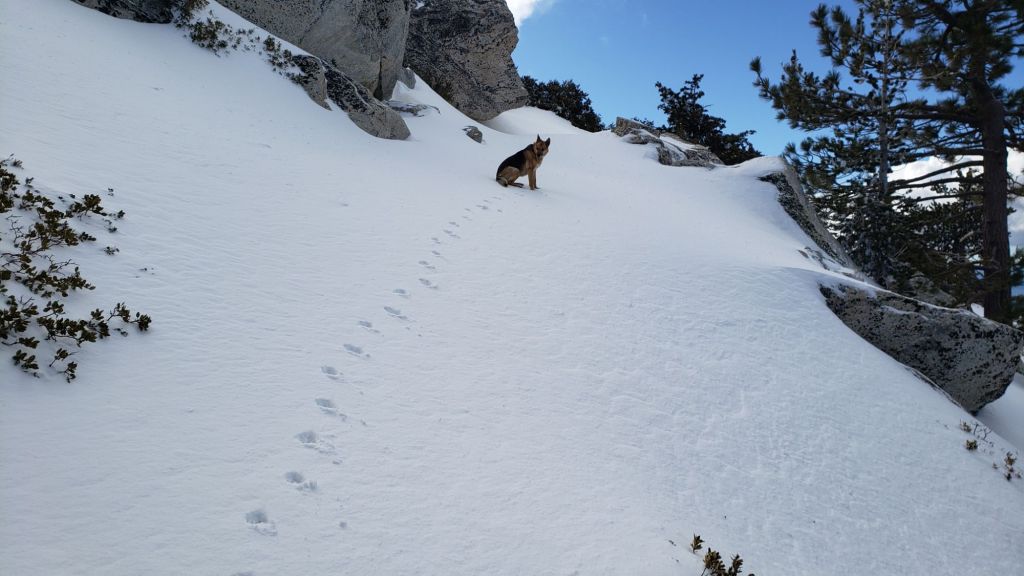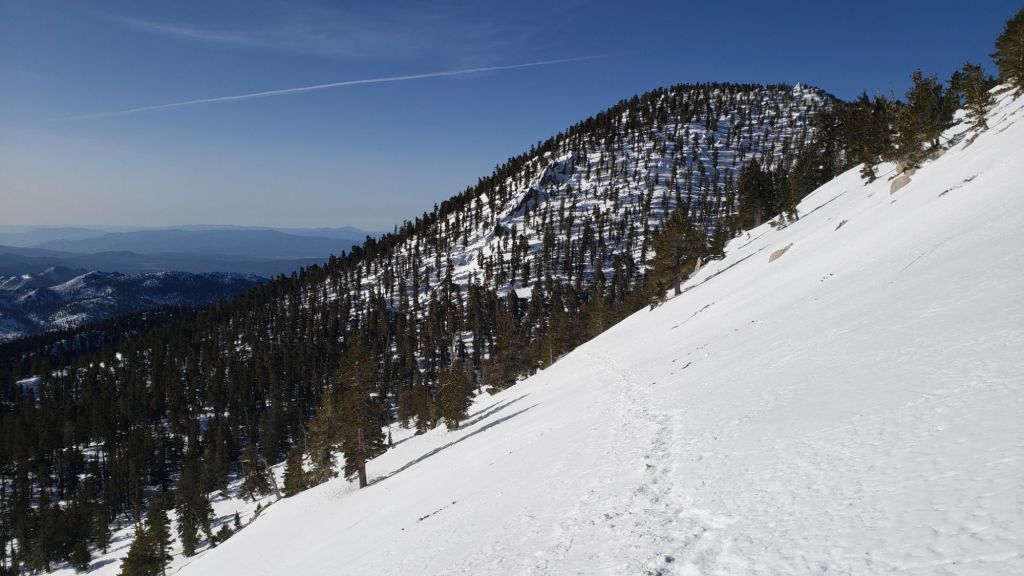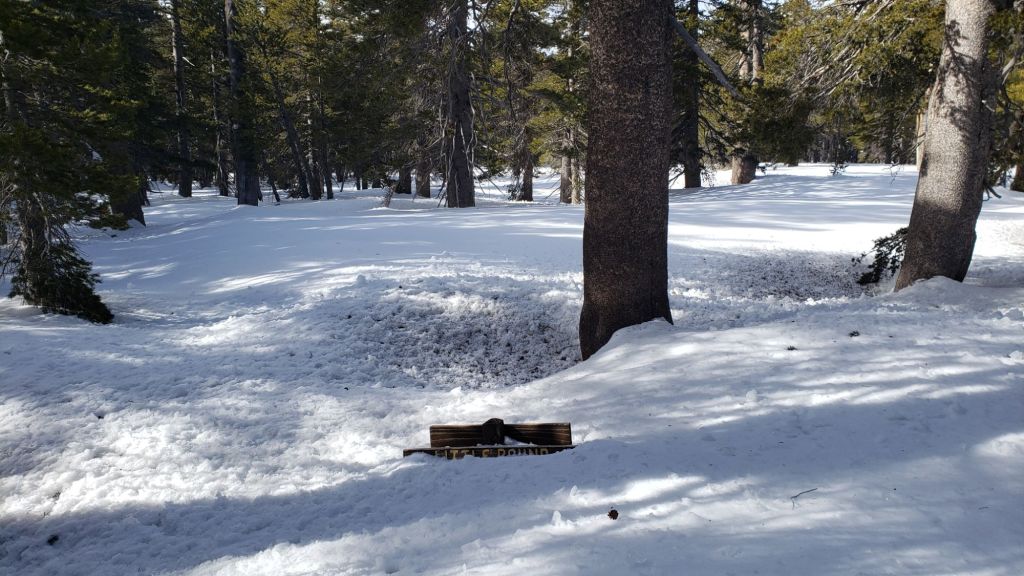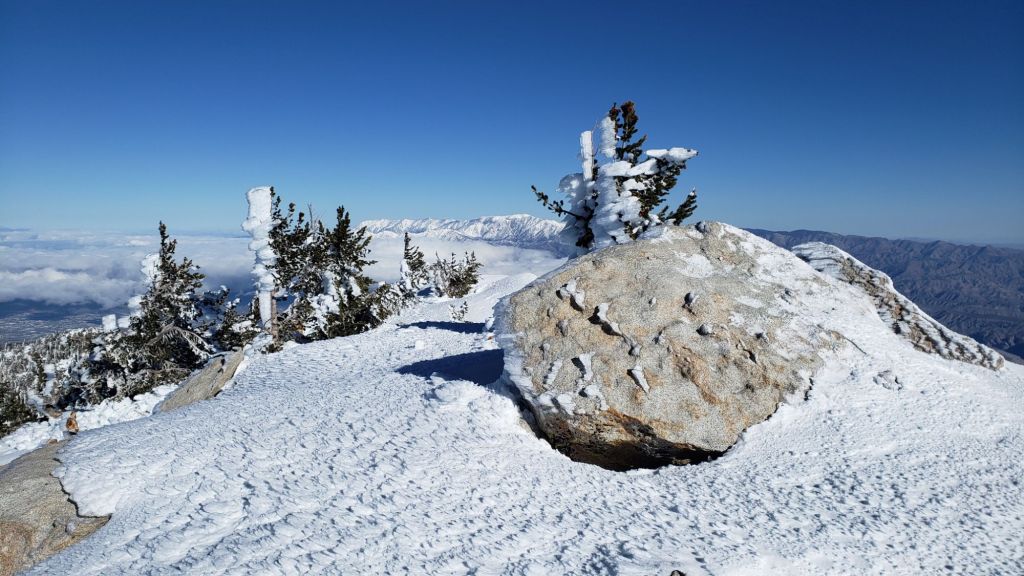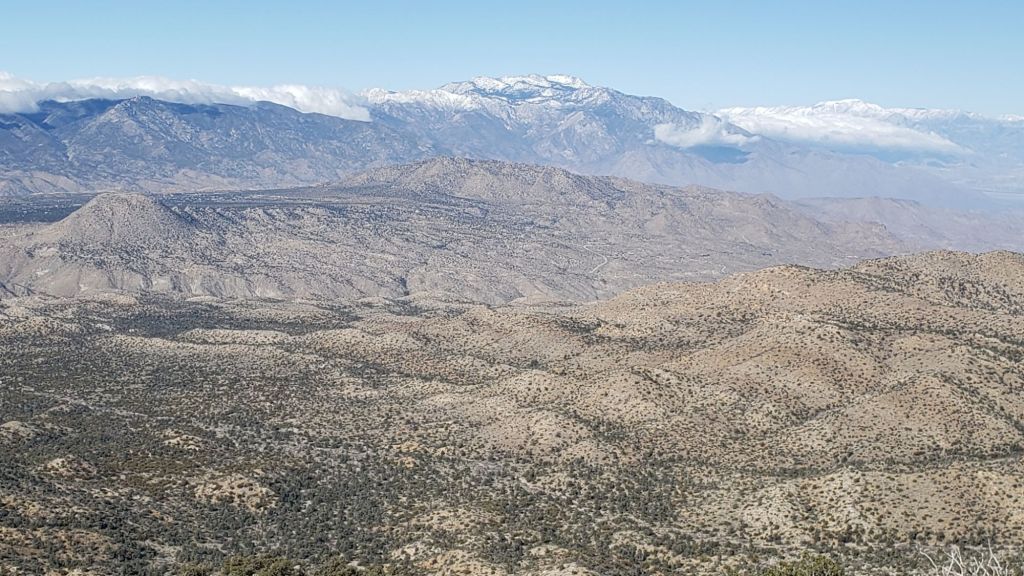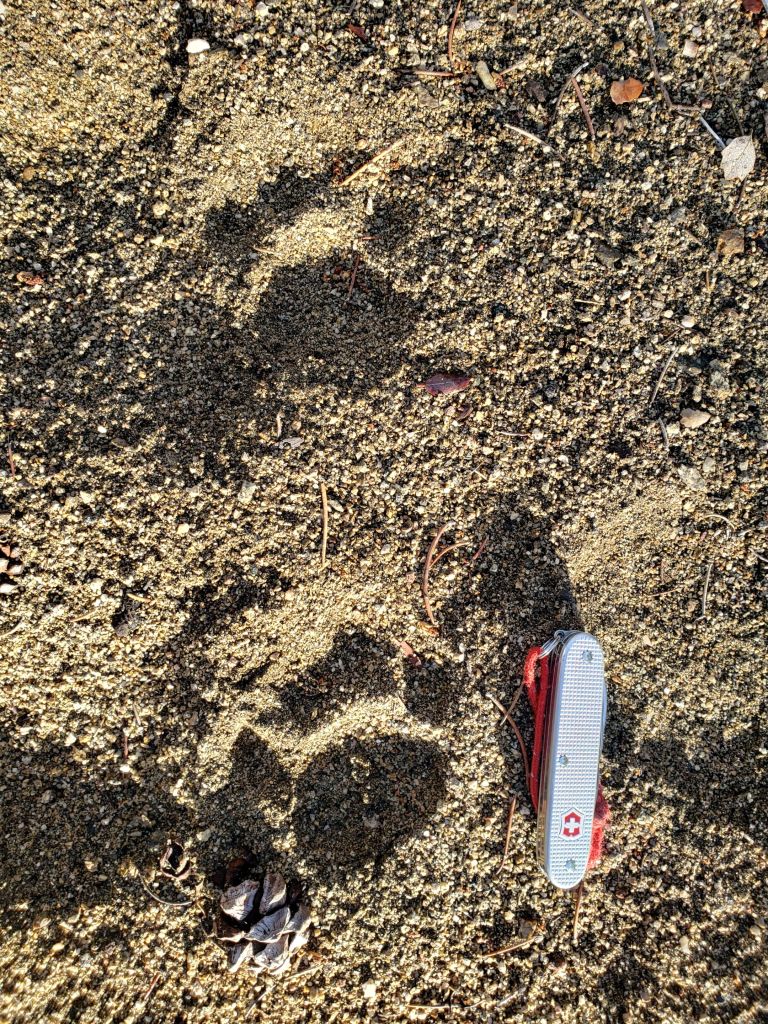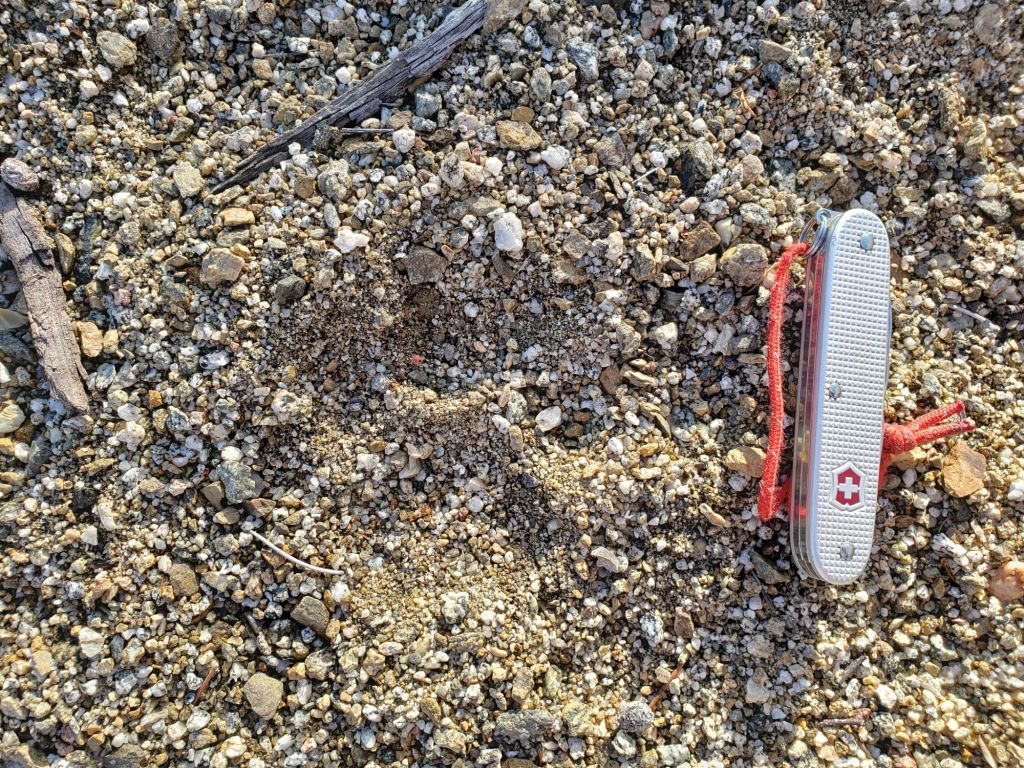Above seasonal temperatures in recent days have greatly accelerated snowmelt. It is now possible to bareboot almost all of the established trail routes, including the entire PCT through the San Jacinto mountains. However, that option is recommended only for those experienced hiking on unevenly distributed icy snow and using appropriate footwear. For most hikers, carrying spikes remains advised everywhere above about 8000 ft. Spikes tend to be particularly useful for descending, especially later in the day as the snow structure deteriorates, even when they not required for ascending.
Daily survey hikes in the San Jacinto mountains include various routes to San Jacinto Peak multiple times per week (most recently on 5th, 6th, 10th, and 13th May), Tahquitz Peak and area at least once per week (most recently on 9th and 12th May), plus a wide variety of other trails on intervening days.
Details of snow depths measured at various locations on the trail system are given at the foot of this posting. Note however that snow depth itself is very rarely indicative of the difficulty (or ease) of hiking a particular track or trail. For example a well-traveled and defined track across deep snow is often much easier hiking than a lightly traveled track across shallow, angled, icy snow.
Black Mountain Road is closed to vehicle traffic due to winter conditions at the gate 1.7 miles up from Highway 243. The boulder in the road about 0.5 mile above that gate is tentatively scheduled for removal by 17th May. The road is clear of snow to Fuller Ridge campground.
Black Mountain fire lookout is tentatively scheduled to reopen on 19th May, and Tahquitz Peak fire lookout on 26th May.
South Ridge Road reopened for the season on 23rd April. Due to a localized section of deep mud, the uppermost road is currently best suited to high clearance AWD/4WD vehicles. Dark Canyon Road has been closed almost continuously for five years, but is expected to reopen in late May 2024.
Be rattlesnake aware. Southern Pacific Rattlesnakes (Crotalus helleri) are starting to emerge even at the upper end of their elevational distribution and have been seen on the trail system up to at least 6500 ft elevation. Rattlesnakes will get much more active with hot weather in the next week and may be seen anywhere up to about 9300 ft by the end of May.

WEATHER
Temperatures remain above seasonal for May for at least the next week, and especially warm on 16th-19th. Temperatures then drop to about average for late May from Monday 20th. Snowmelt will be rapid and widespread. There is no currently no significant precipitation in the forecasts.
NWS San Diego data (linked here) indicates that rainfall in Idyllwild is at 77% of average so far this water year. My provisional data indicate snowfall in Idyllwild has been about 85% of seasonal, but well below average (c.65%) at San Jacinto Peak.
At San Jacinto Peak (3295m/10,810ft) on Monday 13th May 2024 at 0750 the air temperature was 44.5°F (7°C), with a windchill temperature of 35.2°F (2°C), 32% relative humidity, and a light SE wind sustained at 6 mph gusting to 10.3 mph.
At the Peak on Friday 10th May 2024 at 0745 the air temperature was 37.0°F (3°C), with no measurable windchill temperature, 56% relative humidity, and essentially calm conditions.
TRAIL CONDITIONS
Snowmelt has been very rapid in the past week or so. Trails below 8000 ft are now generally clear of snow. Sun-exposed trails up to 9700 ft are now largely clear of snow (e.g., PCT Miles 179-184.5 from Saddle Junction north to near the top of Marion Mountain Trail). Significant snow-free sections of trails as high as 9900 ft are increasing every day, notably on the sun-exposed eastern side Peak Trail. A few tiny clear patches are even appearing up to 10,500 ft on the Peak Trail.
Snow quality has deteriorated with warmer weather in recent weeks. Tracks have largely consolidated due to freeze-thaw cycles and hiker traffic, and can still be hard and icy in places especially early morning.
Carrying spikes remains useful for most hikers everywhere above about 8000 ft. Icy compacted snow – following many freeze-thaw cycles and now that most trails have been well-traveled – is largely ideal for spikes. Crampons remain strongly recommended for the north side of Tahquitz Peak (discussed below) and could be used as an alternative to spikes anywhere on or off compacted trails above about 10,000 ft for the next few days until bare patches start to become widespread.
Snowshoes are no longer recommended anywhere, and are at best of very limited use away from compacted tracks above about 10,000 ft elevation on warm days later in the day on sunny slopes. I see no recent evidence of hikers using snowshoes anywhere on the mountain.
The State Park section of Skyline Trail reopened on Tuesday 7th May. The trail is clear of ice and spikes are not required.
Devil’s Slide Trail is now clear of snow to Saddle Junction. A few tiny icy snow patches remain very close to the Saddle. The Trail Report has undertaken extensive trail maintenance work since February to remove many tree limbs in and over the trail damaged by ice storms this winter.
South Ridge Trail is now clear of snow to Tahquitz Peak. The Trail Report cleared this winter’s accumulated treefall hazards from South Ridge Trail in April and has also undertaken extensive trail trimming in the past month.
The 0.4 mile section of South Ridge Trail between Chinquapin Flat/PCT Mile 177 and Tahquitz Peak has no reliable track to follow all the way through at this time [surveyed most recently on 12th May] across patchy angled icy snow. This ice slope is notoriously treacherous. Spikes at least (preferably crampons with an ice axe) are recommended if attempting to follow this trail section at this time, along with the necessary skills and experience to use that equipment in icy, angled terrain with considerable exposure. This section is however clearing very rapidly and will have a useable track to follow in late May.
The Peak Trail is now largely clear of snow for the 0.5 mile north of Wellman Divide. The snow track has been well-traveled, fairly accurately follows the true trail route, and already has a few short snow-free patches developing to 10,500 ft. The most heavily-traveled track above 10,400 ft now follows the true Peak Trail route, while a completely snow-covered track ascends directly up the East Ridge route.
Wellman Trail is now clear of snow for most of its length where it is outside of forest cover, with only patchy snow on the forested first 0.25 mile north of Annie’s Junction.
Deer Springs Trail is clear of snow to Strawberry Junction. Above Strawberry Junction snow cover is now very sparse to about 8500 ft, within 0.25 mile of the junction with Marion Mountain Trail. A well-traveled but largely uneven posthole track, that does not accurately follow the trail route in many places, continues through largely continuous snow thereafter. Above the Fuller Ridge Trail junction (8900 ft) snow cover is now only 60% on the sun-exposed slopes until 9300 ft. The track(s) are a mess above that elevation, only vaguely following the trail route, and at times diverging into two or even three options, through largely continuous snow cover. All of the tracks ultimately get to Little Round Valley however. The tracks largely coalesce through Little Round Valley where snow cover is 90%. From the upper end of Little Round Valley to San Jacinto Peak snow cover is almost continuous but thinning steadily, and there are several relatively lightly-traveled posthole tracks that all climb directly up the slope, none approximating the true trail route. Spikes are no longer essential but can be helpful, especially for descending the upper trail, along with cautious navigation.
Marion Mountain Trail is almost entirely clear of snow. A handful of small icy snow patches remain, mostly close to the Deer Springs/PCT junction. Some hikers may find spikes are useful for descending the uppermost trail patches.
Spitler Peak Trail suffered badly during ice storms in early February, and I found 34 new treefall hazards down during my surveys earlier this winter, almost all in the upper half. Most are relatively small and readily passable, but a few are larger, and the combined effect is to make for a slower and scrappier hike.
PACIFIC CREST TRAIL
The PCT is clear of snow from Miles 151 (Highway 74) to about 174.5. A handful of tiny patches remain on some north-facing slopes. Apache Peak (Mile 169.5) is now functionally clear of snow.
The posthole track on the north side of Red Tahquitz (Miles 175-177) does not accurately follow the PCT route in places, through an average of 50% snow cover. Snow cover declines to only about 20% between Miles 178-179. The south-facing slopes at Miles 179-180.3 and 181-183 are now clear of snow, with the exception of a handful of tiny patches.
Snow cover is then significant, but with snow-free patches increasing every day, between Miles 184.5-190. There is a well-traveled and reliable posthole track to follow on the remaining snow-covered sections of Fuller Ridge (Miles 185.5-191). Large sections of this trail, especially on top of the ridge and on south- and west-facing slopes, are now clear. Although the posthole track does not always accurately the PCT route in places, following the main track is the safest way to traverse these miles. Traversing this section is possible barebooting but carrying spikes will continue to be preferred by most hikers.
Some PCT hikers are continuing to report that Fuller Ridge is challenging for those who are not experienced with icy snow travel. Hikers wanting to avoid Fuller Ridge can use the Black Mountain Road alternate. Black Mountain Road is open to hikers but not to vehicle traffic at this time. Spikes are not required on Black Mountain Road.
PCT hikers should not attempt to use South Ridge Trail from the PCT at Chinquapin Flat (roughly Mile 177.7) to Idyllwild via Tahquitz Peak, even though this looks temptingly simple on apps and maps. There are no steps to follow through a significant (but diminishing) section of angled and notoriously treacherous ice slopes. Crampons, always with an ice axe, and expert knowledge of how to use this equipment on high angle terrain, remain recommended. Even in below average snow years like 2024 these slopes always take many weeks longer to clear of ice than adjacent areas, and they will not safely clear until late May.
PCT hikers are politely reminded that overnight stays are not permitted at or near San Jacinto Peak, including in the historic shelter. Mt. San Jacinto State Park regulations do not permit overnight stays in the shelter, which is dedicated for emergency, SAR, and ranger use.
While all time and labor is volunteered, the San Jacinto Trail Report uses small private donations to help cover operating costs. Your contribution keeps the Report available to all, free from advertising or paywalls, and independent from agencies. If you have found this Report useful, please consider using this link to the Donate page. Thank you very much for your support.

SNOW DEPTHS measured on 13th May 2024 (unless otherwise indicated) are as follows. The first number gives current average total depth, which also accounts for substantial melting between and since winter storms. The number in brackets is the greatest depth at that location this winter (where known). Note that averages are given; due to strong winds during and after most storms there has been considerable drifting, plus often very uneven melting during warm interludes. Altitudes and PCT mileages are approximate.
San Jacinto Peak (10810 ft): 18 inches, ranging from 0-40 inches [60 inches on 1st April]
Little Round Valley (9800 ft): 24 inches, ranging from 0-50 inches, measured 10th May
Wellman Divide (9700 ft): 0 inches, ranging from 0-10 [41-43 inches on 8th February], photos below
Annie’s Junction/approx. PCT Mile 181.8 (9070 ft): 11 inches, ranging from 0-22 [55 inches on 1st April]
Seven Pines Trail junction with Deer Springs Trail/PCT Mile 184.9 (8650 ft): 4 inches, measured 10th May
Long Valley (8400 ft): 0 inch [24 inches on 8th February]
Strawberry Junction/PCT Mile 183 (8100 ft): 0 inch
Saddle Junction/PCT Mile 179.9 (8070 ft): 0 inch, isolated drifts up to 8 inches [32 inches on 1st April]
Devil’s Slide Trail at Humber Park (6550 ft): 0 inch [15 inches on 8th February]
Idyllwild (at 5550 ft): 0 inch [9 inches on 8th February]


